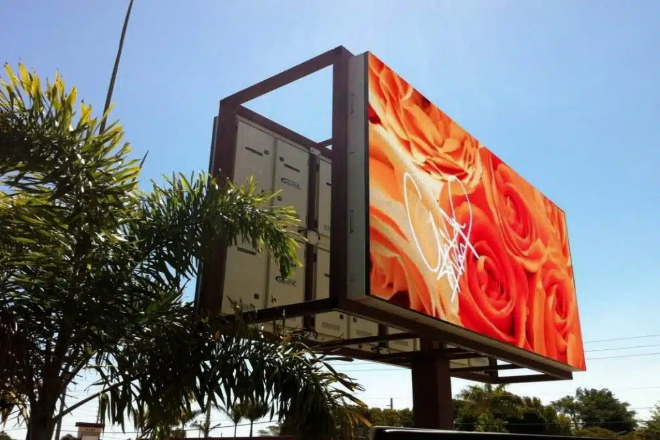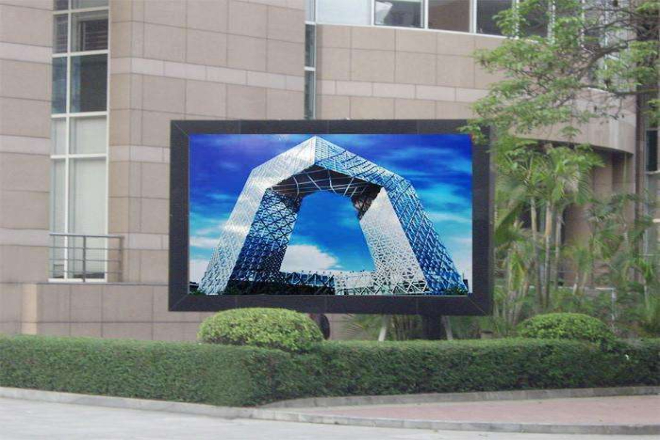序章
In today’s business era, how to efficiently capture the audience’s attention is a question that every brand is thinking about.
LED display, with its dazzling visual effects and flexible communication methods, is becoming a powerful weapon for brand communication.
This article will show you how to use LEDディスプレイ to truly “maximize” brand benefits.
目次
Method 1: Accurately locate the target audience

1). Audience analysis and site selection strategy
1.1). Commercial center:
- Audience characteristics:
People in commercial centers have high consumption capacity and willingness, mainly young office workers and middle- and high-income groups. They pay more attention to fashion, trends, and high-quality products and services.
For example, in urban-level commercial centers, consumers have a greater demand for international brands and high-end luxury goods, while in regional-level commercial centers, consumers have a higher acceptance of various brands.
- Impact on brand communication:
Setting up LED display screens in commercial centers can directly reach the target consumer group, enhance the brand’s exposure and influence in the core consumer market, help shape the brand’s high-end image, and promote product sales.
1.2). Transportation hubs:
- Audience characteristics:
Transportation hubs have a large flow of people and a wide audience, covering people of different ages, occupations, and income levels.
For example, transportation hubs such as subway stations and high-speed rail stations mainly target office workers, business people, students, tourists, etc., who have strong mobility and time urgency.
- Impact on brand communication:
Setting up LED display screens at transportation hubs can achieve rapid dissemination and wide coverage of brand information, increase brand awareness and influence, and are especially suitable for brand promotion for the mass market.
1.3). Community:
- Audience characteristics:
The audience of the community is mainly residents living in the area, mainly families, with a relatively rich age range, including the elderly, middle-aged people, and children.
They pay more attention to products and services closely related to life, such as food, daily necessities, education, medical care, etc.
- Impact on brand communication:
Setting up LED display screens in the community can accurately reach the target customer group, establish a close connection between the brand and community residents, enhance the brand’s affinity and trust, and promote the sales of products in the community.
2). Audience preference analysis
In commercial centers, people mostly come to shop and go shopping, so they like to see fashionable and novel things.
For example, if they see an advertisement of a brand showing new bags or fashionable clothes, if the advertisement is beautiful and creative, they will take a few more glances and may even walk into the store to take a look.
In transportation hubs, people are in a hurry, so they prefer advertisements that can be understood quickly.
For example, seeing a simple advertisement with the words “What’s the weather like today?” or “How many minutes until the next bus?” this kind of practical information is very popular.
In the community, residents are more concerned about the little things in life, and they will be very interested in advertisements such as food discounts and community activities.
If the advertisement can mention some health tips or interesting things between neighbors, everyone will also feel very friendly.
3). Audience behavior pattern analysis
In commercial centers, people have time to stroll slowly, so they will pay attention to attractive advertisements. For example, if they see an interesting interactive advertisement that can be played and take a photo, they will stop.
In transportation hubs, everyone is in a hurry, so if the advertisement is not eye-catching enough, it will be easily ignored.
For example, a large, brightly colored billboard with short text on it can grab everyone’s attention in a few seconds. In the community, residents will see advertisements every day when they enter and exit.
If the content of the advertisement is closely related to their lives, they will pay more attention.
For example, if the advertisement at the entrance of the community says, “Today’s supermarket has special vegetables,” residents will find it useful when passing by and may even go in to buy some.
Method 2: Creative content design and production of LED display screens
1). The importance of creative content
Creative content is like the “soul” of LED display screens, which can make people’s eyes light up. Imagine that you see an ordinary advertisement on the street, and you may forget it at a glance.
But if it is a super cool LED screen with cool animations and fun pictures, it will definitely make you look at it a few more times or even stop to study it. Moreover, good creative content can not only attract people but also convey what the brand wants to say.
For example, Apple’s advertisements are simple and cool. You can tell how powerful Apple products are at a glance, and this feeling will be remembered at once.
For example, a sports brand made an advertisement. The picture shows a group of young people trying their best on the sports field, with sweat splashing, and finally accompanied by the sentence, “Challenge yourself, never give up.”
This kind of advertisement immediately breaks the “dry” feeling of traditional advertisements, making people feel that the brand is very dynamic and contagious, and it immediately narrows the distance from the audience.
2). Content design ideas and methods
The key to designing creative content is to have “ideas.” For example, tell a story. People love to listen to stories, right? You can tell a short story related to the brand.
For example, a beauty brand can tell the process of a girl from bare face to beauty, using its own products in the middle, and the audience will think that this product is amazing.
You can also add some interactive elements. People nowadays like to participate, so adding some interactions to the advertisement, such as scanning codes to play games, voting, etc., the audience will find it fun and stay longer.
For example, on the LED screens of some shopping malls, you can scan codes to play games and win small gifts. Everyone has a lot of fun, and the brand information is also spread.
Emotional resonance is also critical. If the audience can feel a little “tick” when watching the advertisement, then it is successful.
For example, a maternal and infant brand can show a picture of a mother taking care of her child, accompanied by warm music, and the audience with children will definitely be moved.
When designing, you must integrate the brand’s story and values. Each brand has its own “personality”, and putting these personalities into the advertisement will make the advertisement more profound.
For example, an environmental protection brand can show the beauty of nature and then talk about how it protects the environment. The audience will feel that this brand is very responsible.
3). Professional team cooperation
Finding a professional advertising design team is like finding a “creative god” for yourself. These teams have professional skills to turn your ideas into reality, and their heads are full of various novel ideas.
For example, they can design various styles of advertisements according to your brand, some cool, some warm, and some funny.
When choosing a team, you should choose one that is experienced and has a good reputation.
You can look at their previous works and ask other customers how they evaluate them. When working together, communication is very important. You should tell them your ideas clearly and listen to their professional suggestions.
For example, everyone discusses the color of the advertisement and how to lay out the picture, so that the designed advertisement can be in line with the brand tone and attract the audience.
In short, creative content is the “killer” of LED display screens, and professional teams are masters who help you create this “killer.”
With good creative content, your brand can stand out from a bunch of competitors, attract more audiences, and tell the brand story more movingly.
Method 3: Consistency of brand image

A brand image is like a person’s “face,” which is the key to everyone knowing and remembering you.
It includes many things, such as brand logo (that is, the pattern that makes people recognize you at a glance), color (brand-specific color, such as Coca-Cola’s red), font (brand’s commonly used font style), and so on.
These elements are like the brand’s “identity card,” which allows consumers to quickly find you among many brands.
Maintaining the consistency of brand image on LED display screens is as important as matching clothes.
If the image appears differently each time, consumers will feel that the brand is “confusing” and don’t know which one to trust, and it will be difficult to build trust and goodwill in the brand.
In the content design of LED display screens, in order to maintain the consistency of brand image, you must pay attention to several key points. First, the color scheme must be unified.
Just like the decoration style of your home, if the living room is modern and simple, and the bedroom suddenly becomes retro, it will make people feel very abrupt. The same is true for brands.
If the logo is bright red, but the advertising screen is all cold colors, it will make people feel inconsistent.
The use of logos must also be standardized. The logo is like the “face” of the brand. It cannot be big and small, straight and crooked.
It must be clearly visible in the picture, in the right position, and of moderate size so that consumers can recognize it at a glance.
When doing specific operations, you can formulate a detailed brand visual specification manual, which clearly stipulates the size of the logo, color matching, font use, etc.
Every time you design LED content, follow this manual to ensure consistency.
If the brand image is inconsistent, the consequences can be serious. For example, a brand’s usual advertisements are warm and cute, but suddenly one day a cold and serious picture appears on the LED screen, and consumers will think, “Is this the same brand?”
This cognitive confusion will make consumers doubt the brand and even reduce their trust in the brand.
Another example is that a brand’s original image is high-end and atmospheric, but some low-quality pictures or texts that do not match the brand image appear on a certain LED screen.
Consumers will feel that the brand has “lost value,” and the brand image will be damaged. It will be difficult to reverse it in the future.
Method 4: Multi-channel integrated communication
Integrated communication is like “playing a combination punch,” using all channels that can promote the brand so that brand information can be seen in different places.
For example, combining LED display screens with social media, offline activities, etc., can make the brand communication range wider and more influential.
Imagine that you see a cool LED advertisement at the subway station, and then you see the brand’s dynamics on Weibo after you go home, and then you see the brand again when you attend an offline event on the weekend.
This all-around “surrounding” will make you more impressed with the brand and easier to remember.
The online and offline interaction achieved through LED display screens is like building a bridge between different scenes.
For example, putting a QR code on the LED screen, the audience can participate in the online lottery or get coupons by scanning the code, which is a good way to interact.
Or, the advertisement encourages the audience to share their feelings on social media, with the brand’s topic tags, so that offline attention can be drawn to the online.
There are many actual cases. For example, a sports brand shows the wonderful moments of athletes on the LED screen, encourages the audience to scan the code to participate in the online challenge, and also initiates topic discussions on social media.
As a result, the brand’s topic popularity soared, and many consumers participated in it, which had a particularly good effect.
Cross-platform promotion is to let different platforms “advertise” to each other. For example, you can preview the content of the LED display on social media in advance, telling everyone, “Tomorrow there will be a super cool advertisement on the LED screen in XX place; don’t miss it!”
Or guide the audience to follow the social media account on the LED screen, saying, “Scan the code to follow us and get more benefits,” so that users from different platforms can flow to each other and expand the brand’s communication range.
In short, multi-channel integrated communication is like giving wings to the brand, allowing it to be seen in different places, and through online and offline interactions and cross-platform promotion, the brand information can be spread further and wider.
5. Operation and maintenance of LED display

1). Regularly update content
The importance of content update Imagine that if you pass by a billboard every day, and the content on it does not change for several months, would you feel bored? The same is true for the audience.
If the content of the LED display does not change, they will soon become aesthetically fatigued and no longer pay attention.
Therefore, regularly updating content is like bringing freshness to the audience so that they look forward to seeing new things every time.
1.1). Frequency recommendations and planning methods for content updates
The frequency of updating content should be determined according to actual conditions. Generally speaking, if it is a commercial advertisement, it is recommended to update the content once a week so that it can remain fresh and not make the production cost too high.
If it is promotional content, it can be adjusted according to the needs of the event, such as updating it every day during the event and updating it once a week after the event.
Content planning is also very important. You can adjust the content according to seasons, festivals, brand activities, etc. For example, you can display cool products or activities in the summer, Christmas can
have Christmas-themed advertisements, and when the brand has new products released, you can also update the relevant content in time. This will not only make the content more in line with the audience’s interests but also better cooperate with the brand’s strategy.
2). Equipment maintenance and care
2.1). Common faults and preventive measures
Although LED displays are cool, they also need to be taken care of. Common problems include dimming of the screen, flickering of the picture, and partial areas not lighting up. These problems are often caused by dust accumulation, aging of the line or poor contact.
The preventive measures are also simple. Cleaning the screen regularly, just like wiping the dust off the screen of a mobile phone, can prevent dust from affecting the display effect.
Checking the line is also important, just like checking the wires at home to see if there are any loose or damaged areas. Timely repair can avoid many problems.
2.2). Importance of regular maintenance
Regular maintenance is like a physical examination of the equipment, which can detect and solve problems in time and extend the service life of the equipment.
Moreover, professional maintenance teams or after-sales services of equipment suppliers have professional tools and technologies to take better care of your equipment.
For example, they can regularly check whether the 輝度 and color of the screen are normal, whether the line is intact, and update some necessary software in time.
3). Data analysis and effect evaluation
3.1). How to evaluate the communication effect through data analysis
Data analysis is like “scoring” the effect of the LED display. You can use some tools to collect data, such as audience traffic (how many people pass by), dwell time (how long the audience stays in front of the screen), and interactive data (how many people scan the code, vote, etc.).
These data can tell you a lot of information. If the dwell time is short, it may be because the content is not attractive enough.
If the interactive data is low, it may be because the interactive method is not friendly enough. Through these data, you can better understand the audience’s reaction.
3.2). Adjust strategy based on data feedback
Based on data feedback, you can adjust your brand communication strategy. For example, if you find that viewers stay longer on video content than pictures, you can create more video content.
If you find that the interactive data in a certain time period is particularly high, you can adjust the playback time and play important content in that time period.
In short, the operation and maintenance of LED display screens is like taking care of a “high-tech baby”.
You need to regularly update the content to “change clothes” for it, take good care of it to make it “healthy and long-lived”, and “understand its performance” through data analysis, so that it can play its greatest role.
6. Conclusion
LED display screens are not only advertising carriers but also important windows for brand expression.
From precise positioning to creative content, from consistent image to integrated communication to scientific maintenance and data analysis, only systematic application can make LED display screens play the greatest value in improving brand benefits.
最後に、LEDディスプレイスクリーンについてさらに詳しく知りたい場合は、 ご連絡ください。
